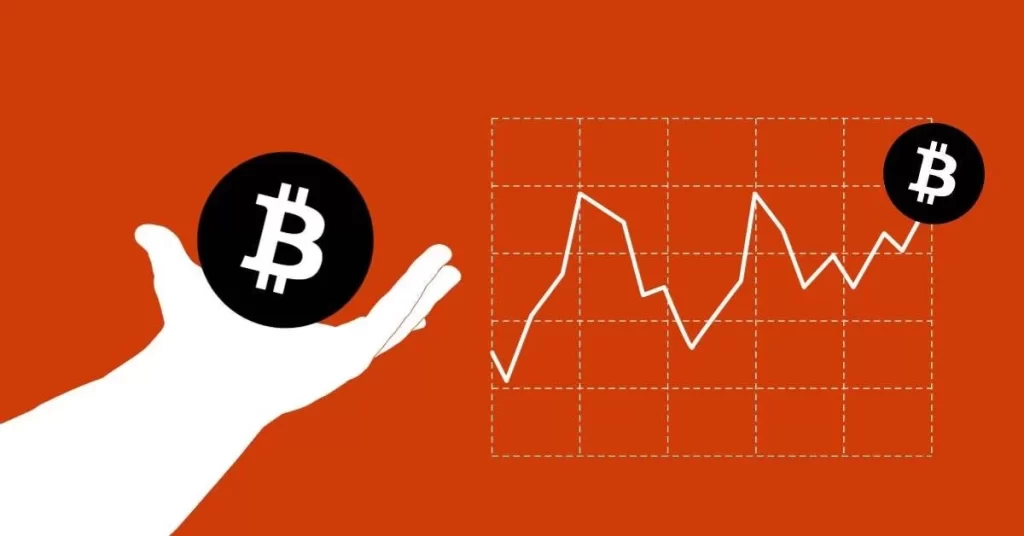Maximizing Gains: Investing Long Term vs Day Trading Cryptocurrencies Explained
Choosing between investing long term vs day trading cryptocurrencies is pivotal for your wealth strategy. With long-term investing, think minimal transactions and patience for potential gains, while day trading demands constant market attention to snatch quick profits amid high risks. Our straightforward comparison equips you with the necessary insights to align your choice with your financial goals and risk capacity, steering clear of excessive detail or persuasion.
Key Takeaways
- Long-term crypto investing involves holding onto digital assets for an extended period, focusing on their intrinsic value and potential for appreciation, utilizing strategies like dollar-cost averaging and diversification to mitigate risks and reduce trading fees.
- Day trading cryptocurrencies requires leveraging short-term price volatility through strategies such as scalp and momentum trading, with a significant focus on risk management techniques such as stop-loss orders and avoiding excessive leverage.
- Both day traders and long-term investors must balance emotional discipline with a thorough understanding of market trends and technical or fundamental analysis to manage risks and optimize their investment strategies.
Understanding Long Term Crypto Investing

The journey into the crypto market often begins with the question – “To hold or not to hold?” Long term investing in the crypto market is akin to embarking on an odyssey. It involves holding onto digital assets over an extended period, banking on their appreciation in value to generate long-term profits. It’s an expedition that requires the right attitude to risk, a deep understanding of the cryptocurrency market, clear investment goals, and an unwavering resolve in the face of potential losses.
However, the journey is not without its rewards. The strategy behind long-term investing is akin to a well-played game of chess, where patience, strategy, and foresight are the keys to success. Long term investors are not swayed by the ebb and flow of the market tide; instead, they anchor their investment decisions on fundamental analysis and a deep understanding of market trends.
The Strategy Behind Long Term Investing
The art of long-term investing is not merely about holding onto assets. It’s about employing a set of strategies that maximize the potential for growth while mitigating risks. One such strategy is dollar-cost averaging. This involves investing a fixed amount of money at regular intervals, irrespective of the market situation. It reduces the impact of market volatility and aids in building wealth steadily over time. The strategy mitigates risks by enabling investors to buy more units of a cryptocurrency when prices are low and fewer when prices are high, effectively reducing the average cost of investments.
Another essential principle in the strategy of long-term investing is diversification. Creating a diversified portfolio ensures that risk is spread across different assets, protecting the investor against significant losses from any single investment. Focus is not on the momentary price movements, but on the intrinsic value of the cryptocurrency. Long-term investors look at the underlying fundamentals and potential for long-term growth.
Benefits of Long Term Investment Strategy
The long-term investment strategy offers unique benefits. One of the most evident advantages is the reduction in trading fees. Since long-term investors engage in fewer transactions compared to day traders, they incur fewer trading fees over time. Moreover, long-term investment strategies can benefit from market volatility. Instead of being a detriment, volatility is averaged out over an extended period, reducing the risk of immediate losses.
Unlike the turbulence experienced by short-term traders, long-term investors ride the waves of market volatility. There’s no need to react to every market movement, and they can wait out periods of high volatility. If the investment is in a cryptocurrency with strong fundamentals, substantial profits are possible given enough time for growth.
Risks and Considerations for Long Term Investors
Despite its perks, long-term investing is not without its risks. Just as Icarus was lured by the allure of the high skies, investors must be wary of the risks that come with the potential high returns of the crypto industry. One such concern is the increasing influence of regulatory action on long-term crypto investments, as seen in the SEC’s active enforcement and high-profile lawsuits and fines against crypto companies.
To ensure a resilient investment strategy, long-term investors must:
- Conduct thorough research
- Diversify investments
- Stay updated with the latest information
- Set realistic investment goals
- Control emotions
Some might even benefit from obtaining professional investment advice. Investing involves risk, including market volatility, cybersecurity issues, liquidity concerns, regulatory changes, and potential operational failures. A thorough understanding of these risks is vital in making informed investment decisions.
Navigating the Waves of Day Trading in Cryptocurrencies

Day trading in cryptocurrencies is a different beast altogether. It is the practice of buying and selling financial assets within the same trading day, often to capitalize on short-term price movements. Unlike the long-term investor who sails the open sea, the day trader rides the waves, staying vigilant and ready to shift course with every change of the wind. The objective is to profit from short-term changes in market and price trends, leveraging the market’s intra-day volatility to generate quick profits.
However, with the promise of quick gains comes high levels of risk and stress. The crypto market is volatile, and prices can swing dramatically within hours, or even minutes. Day trading requires significant experience in the market and a well-honed ability to make quick, informed decisions in an ever-changing environment.
Essentials of Crypto Day Trading
Day trading is not merely about being quick on the draw; it’s about being smart. It involves employing various strategies such as:
- Scalp trading
- Momentum trading
- Arbitrage trading
- Reversal trading
- Using trading bots
Each of these strategies has its own unique nuances and requires a different set of skills and knowledge.
Risk management is another critical aspect of day trading. Traders use various strategies to protect their assets, including:
- Moving assets into cold storage to protect against hacks and losses from exchange failures
- Leveraging Artificial Intelligence (AI) to analyze market trends and spot trading opportunities
- Using AI to facilitate trade execution
These risk management techniques help traders minimize potential losses and maximize their chances of success in day trading.
These strategies and tools form the essential toolkit of the crypto day trader, enabling them to navigate the tumultuous seas of the crypto market.
High Stakes: The Rewards and Perils of Day Trading
Day trading in the cryptocurrency market is not for the faint of heart. It involves buying and selling digital assets within the same day to capitalize on short-term price fluctuations. This requires the use of technical analysis, including volume, price action, and chart patterns, to guide trading decisions.
Day trading strategies such as scalping focus on making small gains over short periods, often utilizing leverage and trading on margin. Although day trading can yield significant profits in bear markets and offers the potential for quick returns on investment, it demands continuous market monitoring, which can be time-consuming and stressful due to high risks.
Furthermore, tax compliance can be complex for day traders, as they need to maintain accurate records of all transactions.
Comparing Trading Styles: Day Traders vs Swing Traders
Day trading and swing trading are two distinct styles of trading, each with its own set of strategies and considerations. While day traders operate within the narrow confines of a single trading day, swing traders operate on a different time frame, often holding positions for several days or weeks to capitalize on expected upward or downward market shifts.
When deciding between day trading and swing trading, crypto market participants need to consider their own:
- Risk tolerance
- Time availability
- Capital resources
- Trading objectives
Understanding one’s trading preferences and goals is essential to determining whether to pursue day trading, with its short-term focus, or swing trading, with its slightly longer time horizon.
Market Mechanics: Technical Analysis vs Fundamental Analysis

In the world of cryptocurrency trading, two main types of analysis guide investment decisions: technical analysis and fundamental analysis. Technical analysis is based on the study of historical price and volume data. It assumes that the price of a cryptocurrency is a reflection of all the information available about it. This form of analysis employs statistical and mathematical tools to predict future market behavior based on past market performance and chart patterns.
Conversely, fundamental analysis delves into the intrinsic value of cryptocurrencies. It goes beyond price data, exploring factors such as project’s technology, economic indicators, and governance structures. This involves a thorough evaluation of financial statements, project objectives, market position, and technological innovations to discern a digital currency’s long-term potential.
Technical Analysis for the Short Term Trader
Day traders frequently use technical analysis as their compass in the tumultuous seas of the crypto market. They use an array of tools such as chart patterns, trading signals, and indicators to guide trading decisions. These tools such as moving averages, the Relative Strength Index (RSI), Moving Average Convergence Divergence (MACD), and trendlines, are used to scrutinize price charts and analyze market sentiment.
These tools, combined with strategies like breakout trading, help day traders make swift, informed decisions by evaluating chart patterns and past market performance. They facilitate the identification of trading opportunities and potential price movements.
Fundamental Analysis for the Long Term Investor
Long-term investors, on the other hand, use fundamental analysis to evaluate the growth potential and underlying value of cryptocurrencies. This involves assessing the intrinsic value of digital currencies by examining:
- blockchain technology
- project development
- adoption rates
- market sentiment
These factors, influenced by market dynamics, are considered for long-term growth prediction.
By focusing on market capitalization, trading volume, technological developments, and the strength of the underlying project, long-term investors can evaluate the growth potential in cryptocurrencies. They thoroughly analyze cryptocurrency whitepapers, roadmaps, and the underlying technology. Also, in-depth research into market trends of different cryptocurrencies is vital for understanding their potential risks and long-term performance.
Risk Management in Crypto: Day Trading vs Long Term Investing

In the roller-coaster world of cryptocurrency trading and investing, understanding and managing risks is a survival skill. Both day traders and long-term investors need to have a clear understanding of the risks involved and formulate strategies to mitigate them. Adherence to a solid investment plan with clear objectives and established risk tolerance is crucial for navigating market fluctuations in the cryptocurrency space.
The importance of assessing risks such as market volatility, regulatory changes, and cybersecurity threats cannot be overstated. These risks play a vital role in making informed decisions in both day trading and long-term crypto investing.
Managing Risks as a Day Trader
Day traders face a unique set of risks. The high volatility inherent in the cryptocurrency market requires day traders to manage their asset allocation carefully, often dedicating a smaller part of their portfolio to day trading. Since day trading is a high-stakes activity that necessitates precise timing, it should represent only a specified, limited percentage of a trader’s overall investment strategy.
Day traders manage risks by:
- Using stop-loss and take-profit orders, which automatically execute trades at predetermined prices to limit losses or lock in profits
- Not investing more money than they can afford to lose
- Avoiding excessive leverage in trades to prevent the total loss of invested capital during rapid market movements.
Risk Mitigation for Long Term Crypto Investors
On the other hand, long-term investors have a different set of risk considerations. They utilize fundamental analysis to evaluate a cryptocurrency’s underlying value based on supply and demand dynamics, technological advancements, and regulatory changes. To mitigate risk, they diversify investments across different cryptocurrencies to minimize the emotional impact of volatility.
Understanding personal risk tolerance and investment goals is crucial for strategy development and portfolio rebalancing, while staying abreast of market developments and regulatory changes enables timely strategic adaptations. It’s crucial to understand that unlike technical analysis, fundamental analysis may not fully address an asset’s intrinsic worth.
Crafting Your Crypto Portfolio: Allocation Strategies
A well-crafted portfolio is the key to successful crypto investing. Whether you’re a day trader or a long-term investor, diversification should be at the heart of your investment strategy. A diversified crypto portfolio minimizes the impact of market volatility and spreads risk across several assets rather than concentrating it in just a few cryptocurrencies.
An effective portfolio includes diversification across different industry sectors, geographic regions, and blockchain protocols, to mitigate risks. This involves including a variety of token types in the portfolio, contributing to a more resilient investment strategy. Tokenized assets such as real estate, art, and precious metals, offer alternative investment avenues within the crypto space, expanding diversification options.
Asset Allocation for Day Trading
In the world of day trading, asset allocation requires a different approach. Due to the high volatility inherent in the cryptocurrency market, day traders should manage their asset allocation carefully, often dedicating a smaller part of their portfolio to day trading activities.
Day trading is a high-stakes activity that necessitates precise timing; therefore, it should represent only a specified, limited percentage of a trader’s overall investment strategy, including margin trading.
Building a Long Term Crypto Investment Portfolio
For long-term investors, diversification forms the bedrock of a sound investment portfolio. The focus should be on including major smart contract platforms such as:
- Ethereum
- Cardano
- Solana
- BNB
And balancing this with smaller, promising tokens for potential high returns. Building a resilient long-term portfolio also involves allocating a portion to well-established cryptocurrencies that show lower relative volatility.
Investors are advised to:
- Stay updated on industry trends and market leaders
- Diversify their use cases to maintain and optimize a long-term crypto investment portfolio
- Adapt to market changes to lead to better investment performance.
Investment Psychology: Emotional Discipline in Trading and Investing

The world of crypto trading and investing is a battleground, and the warriors are not just fighting against market volatility and financial risks; they’re also fighting against their own emotions. Emotional discipline is critical in crypto trading as emotions such as fear, greed, and FOMO can precipitate rushed decisions like panic selling during market lows or overbuying when prices peak.
Investors who can master their emotions and maintain discipline in their trading and investing actions are the ones who stand to gain the most. They can make rational decisions, stick to their investment strategy, and avoid impulsive actions that could lead to losses.
Emotional Challenges for Day Traders
Day traders often experience intense anxiety over potential financial losses, and comparable emotions can arise from trading successes. These emotions can trigger impulsive trading, while overconfidence from wins can lead to greed-driven recklessness. To avoid falling prey to emotional trading, day traders must adhere to a well-defined trading strategy and exercise self-discipline.
Routine practice in emotional control and trading situation analysis helps day traders refine their strategies and emotional responses.
The Investor Mindset for Long Term Success
Long-term investors, on the other hand, need to maintain a mindset geared towards long-term success. This involves:
- Improving investment discipline by avoiding emotional decision-making
- Focusing on long-term trends and fundamental analysis
- Not letting emotions govern their decisions, especially in resisting the urge to sell during market downturns
By following these principles, investors can achieve better long-term results.
Effectively managing emotions is critical for long-term success in cryptocurrency investing as it helps in avoiding losses and optimizing returns. It’s like sailing the seas; the investor who can keep calm during a storm is the one who reaches the shore.
Adapting to Market Conditions: When to Trade and When to Hold
Just as a chameleon adapts to its surroundings, so must a trader adapt to market conditions. In a bullish crypto market trend, there are plentiful trading opportunities, but investors must be vigilant of potential market corrections. Analyzing bullish trends, such as increasing trading volumes and price surges, can guide investors to make informed decisions on when to trade.
After a bull run, heightened volatility and shifts in market sentiment demand that investors adapt their strategies to continue trading effectively in the stock market and other financial markets. Maintaining flexibility within a portfolio and adjusting asset allocation in light of market changes can lead to better investment performance.
During market downturns and bear phases, a key objective for investors is capital preservation, with an emphasis on forming strategic partnerships and gearing up for future market opportunities.
Summary
In summary, cryptocurrency investing, whether long-term or day trading, requires knowledge, strategy, risk-management, emotional discipline, and adaptability. Long-term investing involves holding onto assets, focusing on their potential for growth in the long run. Day trading, on the other hand, involves capitalizing on short-term price movements within the same trading day. Both require different strategies, risk management techniques, and emotional discipline. The choice between the two depends on an individual’s risk tolerance, time availability, capital resources, and trading objectives.
Frequently Asked Questions
What is long-term investing in cryptocurrencies?
Long-term investing in cryptocurrencies means holding onto digital assets over an extended period with the goal of generating long-term profits as the assets appreciate in value.
What is day trading in cryptocurrencies?
Day trading in cryptocurrencies means buying and selling financial assets within the same trading day to capitalize on short-term price movements.
How does technical analysis differ from fundamental analysis in crypto trading?
Technical analysis in crypto trading focuses on historical price and volume data to identify patterns and trends, while fundamental analysis examines factors beyond price data, such as technology and economic indicators. This helps traders determine intrinsic value of cryptocurrencies.
What are some of the ways to manage risks in cryptocurrency day trading?
To manage risks in cryptocurrency day trading, it’s important to use stop-loss and take-profit orders, avoid excessive leverage, and consider advanced strategies like hedging. This will help you mitigate potential losses and protect your investments.
How can long-term investors mitigate risks in their crypto investments?
To mitigate risks in crypto investments, long-term investors should diversify their portfolio, assess their risk tolerance and investment objectives, and stay updated on market trends and regulations. This will help ensure a more balanced and informed investment strategy.

